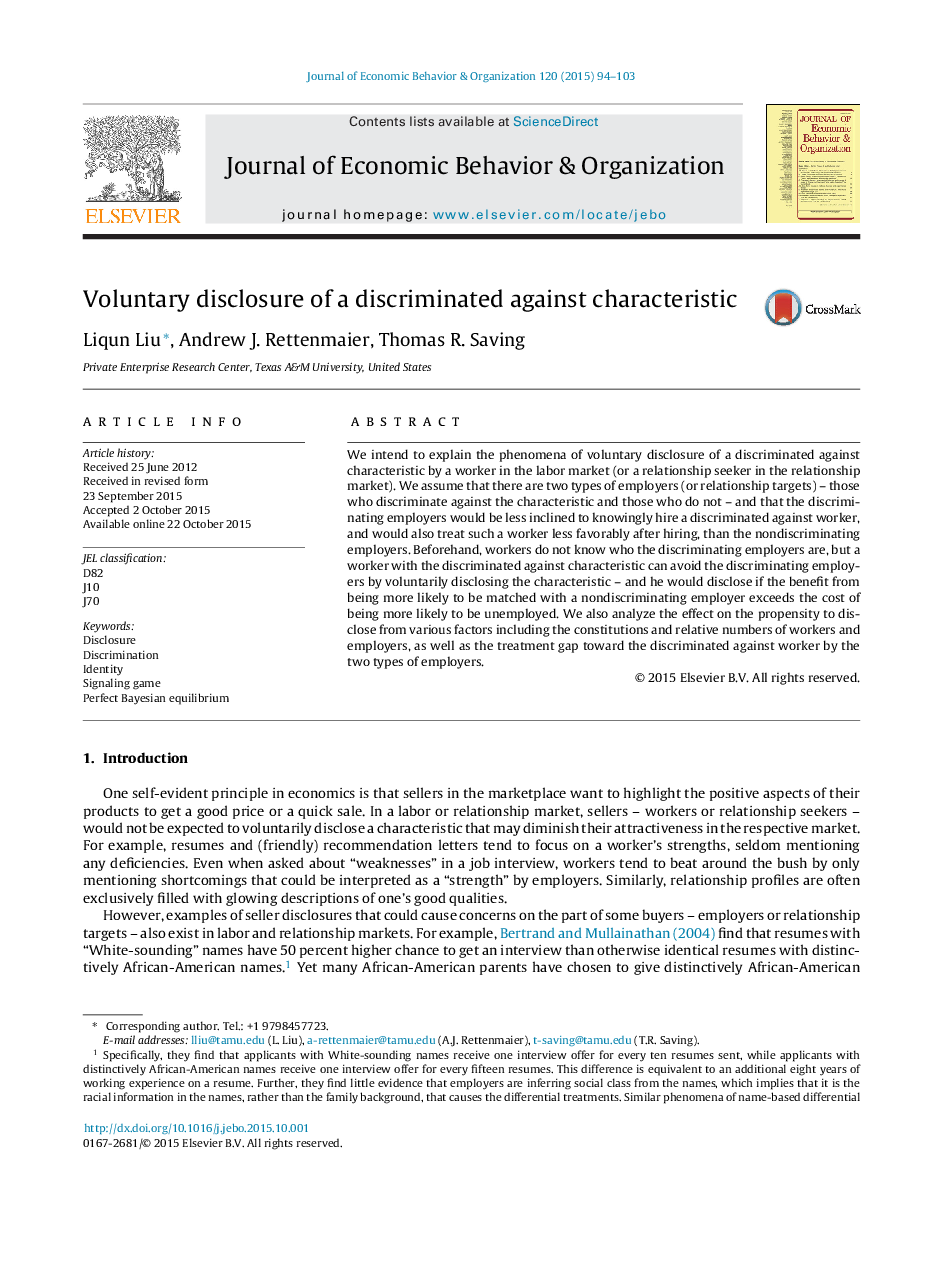| Article ID | Journal | Published Year | Pages | File Type |
|---|---|---|---|---|
| 883444 | Journal of Economic Behavior & Organization | 2015 | 10 Pages |
•It explains workers’ voluntary disclosure of a discriminated against characteristic.•Workers use disclosure as a tool to find more favorable matches.•It analyzes the effect on propensity to disclose from various factors.
We intend to explain the phenomena of voluntary disclosure of a discriminated against characteristic by a worker in the labor market (or a relationship seeker in the relationship market). We assume that there are two types of employers (or relationship targets) – those who discriminate against the characteristic and those who do not – and that the discriminating employers would be less inclined to knowingly hire a discriminated against worker, and would also treat such a worker less favorably after hiring, than the nondiscriminating employers. Beforehand, workers do not know who the discriminating employers are, but a worker with the discriminated against characteristic can avoid the discriminating employers by voluntarily disclosing the characteristic – and he would disclose if the benefit from being more likely to be matched with a nondiscriminating employer exceeds the cost of being more likely to be unemployed. We also analyze the effect on the propensity to disclose from various factors including the constitutions and relative numbers of workers and employers, as well as the treatment gap toward the discriminated against worker by the two types of employers.
